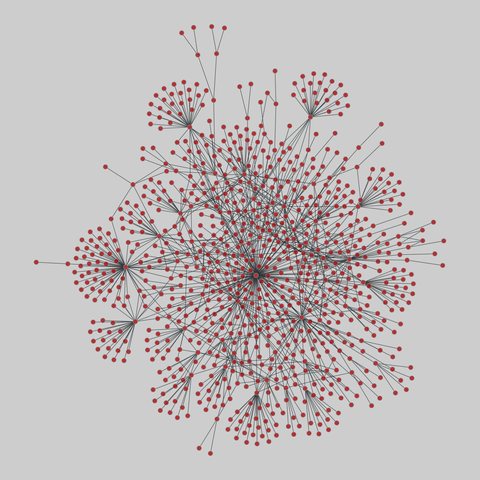2025-10-20 10:25:40
SpaceX launched 56 Starlink satellites on separate Falcon 9 rockets on October 19, surpassing 10,000 total satellites launched into low Earth orbit to date (Thomas Ricker/The Verge)
https://www.theverge.com/news/802509/starlink-launches-10000th-internet-sate…
2025-10-21 16:45:27
Kyiv Independent launches holiday gift guide celebrating Ukrainian creativity: https://benborges.xyz/2025/10/21/kyiv-independent-launches-holiday-gift.html
2025-12-20 20:00:03
unicodelang: Languages spoken by country (2015)
A bipartite network of languages and the countries in which they are spoken, as estimated by Unicode. Edges are weighted by the proportion of the given country's population that is literate in a particular language.
This network has 868 nodes and 1255 edges.
Tags: Informational, Relatedness, Weighted
2025-11-21 00:27:40
Cool - I wonder how long before ICE tries to shut this down?
I see that the domain name is under the country code for Iceland - which is good and reasonably beyond the reach of the US.
"ICE List Launches Wiki to Expose Enforcement Network"
https://migrantinsider.com/p/news-ice-
2025-10-21 21:20:56
'TildeOpen LLM – an open-source foundational large language model with over 30 billion parameters, built to support all European languages. You can fine-tune it to your own needs and deploy it securely – locally or in the cloud – to build trustworthy AI that actually speaks your language' https://tilde.ai/tildeopen-llm/
2025-11-20 16:15:52
"PHP is the lingua franca of affordable web hosting options; or, in other terms, the Toyota Corolla of programming languages: boring, solid, easy, and affordable. You can find, almost anywhere in the world, an affordable web hosting with the saint quadrinity of LAMP: Linux, Apache, MySQL, and PHP; an OS, a web server, a database server, and a scripting language, in an inexpensive package, enabling the masses to go further. Paraphrasing George Clooney, what else?"
2025-11-20 20:41:57
“What began as an effort to identify individual officers has evolved into a far more ambitious accountability tool. Soon, organizers say, every incident will be mapped to who was there, which ICE facility or federal agency they came from, what vehicle they used, who led the team, and how many times they’ve appeared in other operations.”
2025-11-20 09:42:01
from my link log —
The sixtyforgan: a Commodore 64 with a spring reverb; chiptunes like a church organ.
http://www.linusakesson.net/sixtyforgan/
saved 2021-03-30 htt…
2025-11-20 19:20:49
OpenAI expands group chats in ChatGPT globally to all logged-in users on Free, Go, Plus, and Pro plans, after piloting the feature in select regions (Aisha Malik/TechCrunch)
https://techcrunch.com/2025/11/20/chatgpt-launches-group-chats-globally/
2025-12-20 17:16:08
WATCH! EU launches €90B for Ukraine | War hits Russia | Trump’s sanctions game: https://benborges.xyz/2025/12/20/watch-eu-launches-b-for.html





